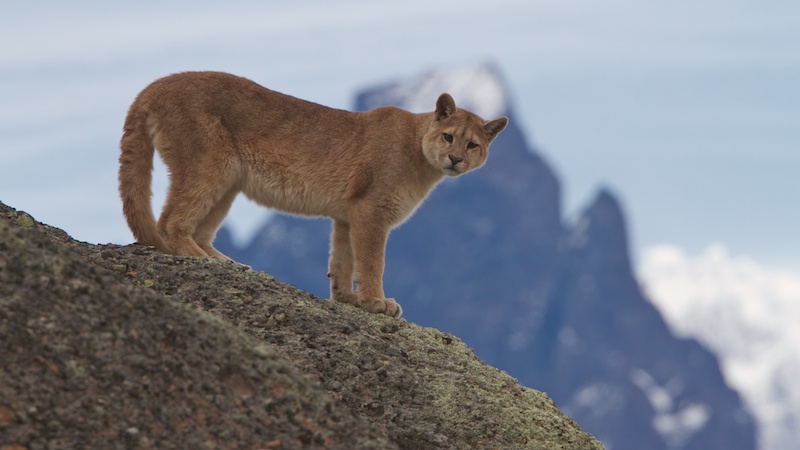Thursday, June 21, 2018

In the half light of pre-dawn, Ged bounced the Landrover along the gray gravel road. "There's one!" he enthused, "and another!" A tawny phantom slipped across the road in the glow of our headlights. I peered out the passenger side window, "There's another one over here!" He rumbled the truck to a stop at the side of the road and as we all got out, a fourth cat disappeared up the slope into the dissipating night. Pumas! Four of them on our first outing.
We started after them in the near darkness, trying not to stumble over the clumps of short, wild grasses and scattered low bushes. I wonder if this is quite safe? Rich was next to me. He whispered, "There's another." Not twenty-five feet from us, the largest of the morning's pumas crouched behind one of those bushes. Then she bounded off, dematerializing up the slope after her cubs. Near where she had crouched, we found the blood, sinew, muscle, fur, and bone of what had, until recently, been a guanaco. The remains smelled of funk and musk, not of decay and mold. This was a fresh kill. We had, unintentionally, disturbed a family breakfast. The new morning's light increased. We searched on foot and from the truck over the steeply rolling terrain. There were no trees, no heavy undergrowth in which to hide, but we never saw those ghosts again. My first morning in the field in Patagonia.
I had come to Patagonia with Ged Caddick’s Terra Incognita Ecotours. The trip, wonderful as it was, tested me in a number of ways. Perhaps what Patagonia tested most was my ability to appreciate the wonder of it all. While there, I did not find Patagonia to be as consistently stimulating as some of the other wild places I have been fortunate to visit. I didn’t know why.
In the months after my return home, I talked about my adventure with friends and showed them my pictures. Their reactions to my tales and photos made me think that, somehow, they were more impressed with it all than I had been. Over time as I looked at my pictures through their eyes, I began to see what they were seeing. The steep mountains were so imposing, so grand and beautiful, that they could only have been created by oil paints brushed onto canvas. Yet, they were real. The scenes of endless rolling terrain populated only by unseen pumas, guanacos, pygmy-ostrich-like rheas, and other wild creatures wandering under perfect blue skies could only be conjured by the imagination. Yet, I had really been there.
At the end of Fitzgerald's The Great Gatsby, the narrator notes that Long Island was once wilderness and a terra incognita -- an unknown land. He muses about its European discoverers: "For a transitory enchanted moment man must have held his breath in the presence of this continent, compelled into an aesthetic contemplation he neither understood nor desired, face to face for the last time in history with something commensurate to his capacity for wonder."
Every week I stand in front of one exhibit or another at the Maryland Zoo in Baltimore as an “interpreter.” Visitors stroll by, sometimes barely noticing or missing altogether the cheetahs or lions, which I see often enough to almost take their uniqueness for granted. As I begin to talk about the animals most visitors stop and, while they listen, their faces reveal that they too have come face to face with something commensurate to their capacity for wonder. This is the highest compliment we can receive when we are doing our jobs as docents and volunteers in the device of animals and their conservation. The bonus we receive is that seeing the wonder in a visitor’s eyes reawakens our own sense of wonderment.
--Bob Lidston

